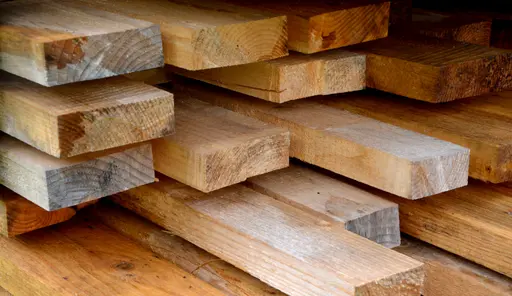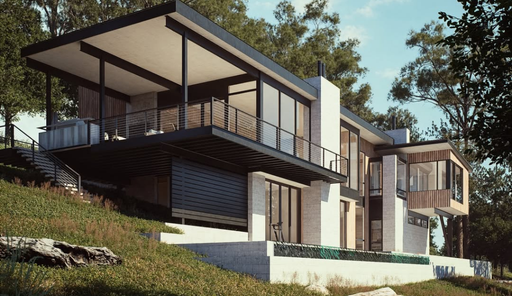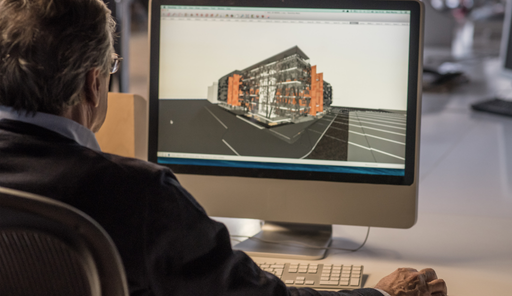Blog
Mass Timber Residential Construction: Quality Control and Inspection

September 24, 2025
Mass timber residential building is quickly becoming a disruptive innovation within the building sector and involves the use of large, prefabricated wood components such as cross-laminated timber (CLT) and glue-laminated timber (glulam) to create strong and resilient mass timber homes. Alternatives to traditional construction which utilizes steel and concrete can provide shortened project schedules through off-site fabrication, lowered onsite labor time and reduced overall material waste. Mass timber residential construction combines sustainable construction materials with efficiency and the architectural aesthetics of modern mass timber architecture. With all these benefits, establishing stringent quality control, quality assurance and inspection throughout the design and construction processes is important to obtain structural integrity, fire safety and material efficiencies in mass timber residential construction projects.
Why is Mass Timber Considered a Responsible Building Material ?
While mass timber is harvested from renewable forests, it is also manufactured with a substantially lower carbon footprint than steel or concrete. Trees take in carbon dioxide and emit oxygen over their lifetimes, during which carbon is stored in timber products over the lifetime of a structure. By utilizing prefabricated components off-site, minimizes waste and labor on-site, whilst ultimately and ultimately contributing to sustainability goals. As such, mass timber residential construction is an important part of reducing carbon emissions and combating climate change.
Benefits of Using Mass Timber in Residential and Commercial Buildings
Mass timber has many benefits for building projects. Prefabrication speeds construction schedules, decreasing onsite labor costs and minimizing inconvenience. Its lightweight nature reduces where the building is supposed to rest as well as the cost associated with that. Exposed wood has warmth and natural beauty that adds to occupant wellbeing, an important element of mass timber architecture, among other characteristics. Building with mass timber also improves how well the building resists fire due to the protective char that eventually forms during combustion, continuing to maintain structural integrity. These benefits combined offer reduced total costs over the long term even in the presence of a somewhat higher initial cost of mass timber.
The Importance of Quality Control in Mass Timber Construction
Quality control begins at the manufacturing stage with careful certification that timber components meet structural and fire safety standards. Taking control of moisture accurately reduces shrink or warp at the risk of mildew and decay. Dimensional control allows for limited or no adjustments when assembling mass timber panels on-site, which speeds up the assembly due to improved safety and doing it right the first time.
There is ongoing inspection during transport, on-site storage and during installation to mitigate moisture and damage to the product. The onsite inspector will inspect fastener connections and joints to assure the assembly of components will function as they were designed to and meet the relevant building code. Quality control ultimately reduce risk for structural failure, reduces accelerated wear and cost of rework.
Mass Timber Architecture: Quality’s Role in Aesthetics and Innovation
One of the most attractive aspects of mass timber architecture is its exposed wood interiors and the warm and natural sense of well-being it provides to the user. Maintaining this aesthetic is often incredibly demanding, requiring high-quality control—producing surfaces without cracks, stains, or an unpleasant uniformity. At , we developed an inspection program that uses advanced technology to support the architecture; the result is assured safety performance in regards to large open floors or hybrid structural systems, without compromising on the design outcome. Attention to quality inspection will allow architects to expand their creativity, as they are challenged to use mass timber in unique, beautiful, and performing structures.
Managing Costs: How Quality Control Impacts Mass Timber Cost
Though mass timber cost may appear to be higher initially, due to engineered materials and specialized design, quality control saves money upfront because it limits the risk of costly design errors and construction delays. Prefabrication decreases labour costs and improves scheduling and timing, resulting in savings that may overcome any initial high cost. Furthermore, the durability and energy efficiency associated with well-checked mass timber buildings produces ongoing operational savings.
Similarly, developers may realize some additional return on investment from sustainability incentives and certifications relating to the mass timber. As such, focusing on quality through design and construction allows for improved cost results.
Fire Resistance and Safety in Mass Timber Residential Projects
Mass timber performs well in fire safety. When exposed to fire, larger sections of timber will char on the exterior of the timber and form an insulating layer protecting the internal core. Many mass timber products are being designed under current building codes with the same level of safety as steel and concrete.
Quality control programs ensure design specifications contain proper fireproofing materials and assembly methods. Ongoing inspection during fabrication and construction process follows fire safety standards, protecting occupants and minimizing liability.
Energy Efficiency and Acoustic Performance
Mass timber’s inherent insulation properties can lead to tighter building envelopes, resulting in lower heating and cooling loads. Prefabricated panels have been made to exacting manufacturing tolerances, which eliminate thermal bridging and air leakage.. These characteristics are combined to provide residential structures improved energy efficiency ratings which save money and mitigate environmental impact.
From an acoustic perspective, mass timber is dense and absorbs sound. Combined with additional soundproofing measures, it results in quiet and comfortable living spaces that are essential to modern residential buildings.
Suitable Projects for Mass Timber Residential Construction
Mass timber is flexible and effective for all types of residential building types like multi-family housing, apartments, assisted living communities, and mixed-use developments. The advantages of mass timber, including speed on-site, sustainability, and beauty, make it a perfect option for any project looking to deliver their project efficiently and responsibly. Examples of appropriate project types are:
- Mid-rise apartment buildings that require the attributes of a luxury product, be durable and fire resistant, and also look great.
- Modular and prefabricated housing projects looking to minimize time on-site and disturbance to the surrounding environment.
- Mass timber’s capacity to respond to these project types illustrates its ability to be a preemptive choice of an emerging relative to modern mass timber construction while balancing performance for the cost of mass timber and flexibility in design.
Conclusion
Mass timber residential construction represents the leading edge of sustainable and efficient building practices. Its viability is fundamentally connected to comprehensive quality control and inspection processes that help check some of the safety, durability, and aesthetic concerns, while balancing cost considerations of mass timber construction. Responsible developers, builders and architects can work responsibly to produce bold environmental, responsible and transformative homes that will establish the future of residential construction.






